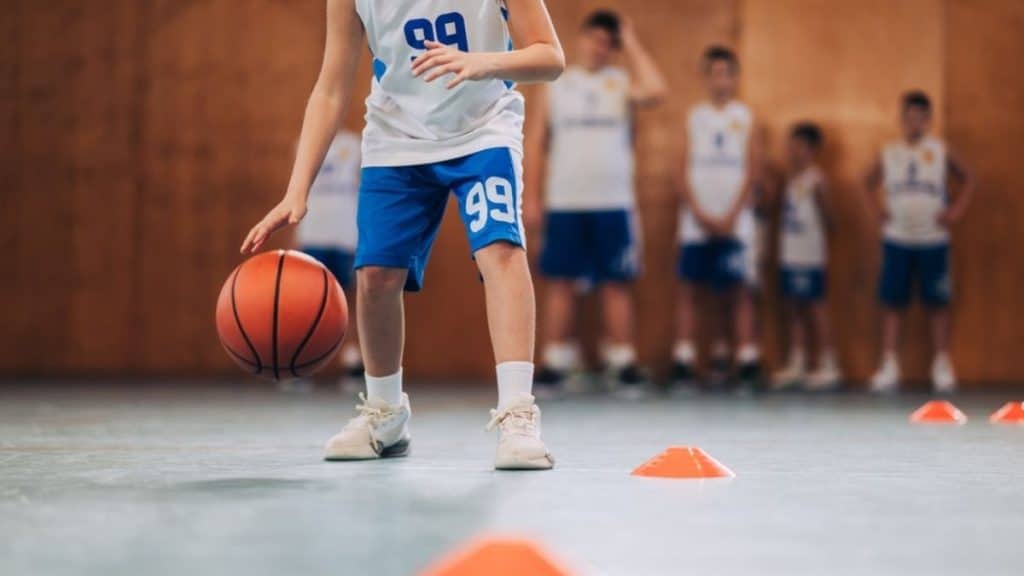Mark Lezanic is a pioneering wealth manager and former collegiate basketball coach whose dual‑track career blends financial acumen with on‑court leadership. From his Pompano Beach headquarters, he crafts customized portfolios featuring real estate, hedge funds, and private equity, while advising affluent clients on tax‑efficient strategies, complex lending for yachts and jets, and legacy‑minded philanthropy. Off the trading floor, Mark’s coaching résumé spans Bucknell University, Loyola College, and the College of William & Mary, where his strategic guidance propelled teams to record‑breaking seasons and NCAA tournament milestones. This combination of disciplined planning and team‑building informs his insights on effective practice management.
Running basketball practices with large youth groups requires tightly organized systems, not just drill plans. When managing 20 or more players in a shared space, coaches must structure each session to account for how players move, when drills reset, and who leads instruction at each station. Without clear systems for flow, timing, and role assignment, large-group practices often result in wait times, overcrowded lines, or inconsistent instruction.
Coaches stage the equipment in every zone before each player arrives. They place ball racks, cones, and instructional aids according to the first rotation plan to avoid delays. Between drills, assistants or designated players handle quick resets so instruction time remains uninterrupted. This setup phase establishes a reliable pace and smooth transitions throughout the session.
Coaches set the tone early by assigning players small arrival tasks, such as retrieving balls, placing cones, or reviewing the rotation board. These assignments keep the group active from the start and reduce idle time. Starting with structure helps players recognize that the session will stay organized, even with a full gym.
To manage spatial and temporal flow, coaches segment the court into multiple drill zones using cones or sideline lines. This setup enables multiple stations to operate in parallel, allowing for simultaneous activities such as shooting reps in one area and footwork loops in another. Drills like partner passing, where players pass to each other while moving, and the three-cone drive-and-kick, where players dribble around cones and pass to simulate in-game motion, simulate game movement while keeping players active and focused.
In noisy gym environments, visual cues reduce the need for constant verbal instruction. Coaches use hand signals, color-coded cones, or numbered station boards to indicate where players should move or how many reps remain. Structured signal systems increase session tempo and reduce confusion during transitions.
Instructional quality across multiple groups depends on consistent coverage and drill adaptation. Coaches assign assistant coaches or experienced players to lead stations, each responsible for executing a scripted set of cues, reps, and corrections. In parallel, coaches organize groups by current ability rather than age, allowing newer athletes to work through fundamentals while advanced players handle layered variations. This structure maintains consistency in instruction while allowing players to progress at their own pace, all without requiring additional staff.
Beyond core drills, coaches implement engagement systems to prevent students from drifting during non-instructional moments. At stations with wait time, players may shadow footwork reps, complete self-monitored counters, or observe peer execution with a checklist. During scrimmages, coaches run shortened games with rotating teams or position-based entry to avoid extended bench time. These mechanisms ensure even off-ball moments serve a purpose and reinforce learning without slowing practice rhythm.
At the end of each session, coaches reinforce instruction through structured closure. This may include dividing players into recap groups, assigning peer summaries, or reviewing goals with a visual prompt. After dismissal, they log completed drills, which rotations players completed, and where athletes showed adjustment needs. These review systems maintain continuity and provide staff with reference points for future practice design.
These same systems allow coaches to run consistent sessions across different gyms or larger programs. Coaches who implement repeatable formats across sessions can run multi-day clinics, manage multiple age groups, or launch seasonal training programs without sacrificing consistency. Instructional success in large-group youth basketball relies less on staffing volume and more on whether every component operates within a repeatable, coordinated system.

